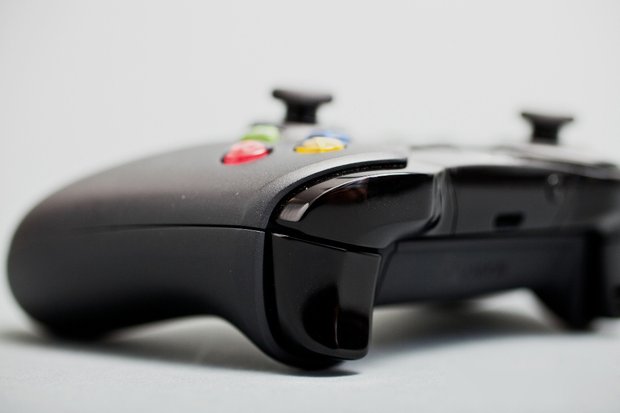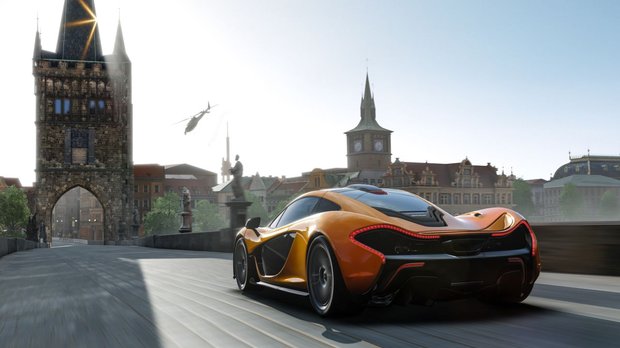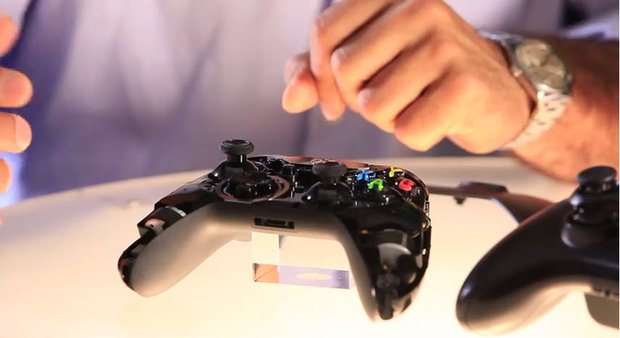What's next? Why you should give a damn about the Xbox One's Impulse Triggers
In the '80s, "rumble technology" exclusively referred to arcade racing games with vibrating seats, the kind kids played solely for the thrill of hanging on for dear life, spending quarter after quarter to see how long they could drive in pixelated grass without projectile vomiting the afternoon's lunch all over the steering wheel. Then came the Nintendo 64's Rumble Pak in 1997, an add-on that made the controller weigh an additional 800 pounds--heavy enough that you could tone your rippling biceps while gaming. The trade-off, of course, was it shook the controller a little when you'd get hit in Star Fox 64. And that blew people's minds.
Fast forward to 2013 and rumble tech hasn't changed a whole lot. It's something we expect to be built into our controllers, a standard feature we only really notice the second it's absent (ahem, PS3's shock-less Sixaxis). So when Microsoft announced that the Xbox One's controller would have additional motors located in the trigger buttons, I couldn't help but wonder how that might affect immersion for the better, if at all.
"The addition of the Impulse Triggers give gamers the unique opportunity to experience precise feedback at the most sensitive part of the human hand—making gamers more connected to their gameplay," says David Dennis, Xbox group PR manager. "Traditional rumble motors alone don't provide as rich of an experience. Just like the upgrade from analog to digital TV is so much better and more lifelike, Impulse Triggers provide a similar level of upgrade for next-generation haptic feedback."
Holy marketing speak, Batman. Still, Dennis raises some good points. While the inclusion of some extra vibrating motors in the Xbox One's controller certainly won't revolutionize gaming the way the transition to digital revolutionized television, it's bound to have a positive effect on the overall experience. Think about it: In most games that utilize rumble motors, every action yields the same amount of feedback regardless of how much force its real-life equivalent might produce. At best, some games make the gamepad to shake with varying degrees of intensity depending on the context. But when controller vibrations tell us that shooting a BB gun feels just like shooting a rocket launcher, that vibration becomes less and less meaningful over time.
In theory, the Impulse Triggers will provide a much-needed layer of precise, subtle feedback. Imagine playing a shooter where pulling the trigger on a gun results in a powerful, resistant click from the trigger on the controller. That sort of physical feedback is a far more valuable tool for immersion than anything ever produced by traditional controller rumble.

But as with current rumble capabilities, it's up to developers to support the technology. Out of all the Xbox One demos I've played so far (Ryse: Son of Rome, Titanfall, Forza Motorsport 5, Lococycle, that dragon game), only Forza actually used the Impulse Triggers. Having felt them in action myself, I'm pretty damn excited about their potential. As is Dan Greenawalt, Forza's creative director.
"All it takes is a few corners on the track in Forza Motorsport 5 to really get a feel for how the Impulse Triggers change the racing experience," Greenawalt says. "Instead of a general rumble that is felt in both hands, the rumble in each trigger is now independently controlled, and the rumble experience is more reactive than ever to reproducing what is happening on track."
Sign up to the GamesRadar+ Newsletter
Weekly digests, tales from the communities you love, and more

He's not kidding. During my Forza 5 demo at PAX, I spent about 30 seconds driving on the track before making a beeline straight for the grass. All I wanted to do was feel how the triggers would respond to my actions--and to my delight, they provided differing degrees of feedback depending on the surface I was driving on. That feedback was often independent from the base rumble of the controller, which feels far more pronounced when activated in conjunction with the triggers. In the case of Forza, Greenawalt says those triggers potentially change the way gamers learn to handle virtual cars.
"By necessity, players learn to drive in racing games largely by relying on visual and audio feedback," he says. "That’s different from how people learn how to drive cars in real life, especially race cars--where things like G-forces and weight transfer play a huge role in how you react to the car’s performance. In real life, drivers learn just as much from the feel of the car as they do from what they see and hear.
"In Forza Motorsport 5, we use rumble in a number of different ways to simulate as many of those physical forces as we can," Greenawalt says. "The rumble found in the controller chassis itself is used to convey feedback like engine RPM, suspension bump, collisions, and so on. The triggers handle tire slip exclusively (one trigger communicates the effects of throttle on slip, the other of braking on slip). As you drive, you’ll feel undulations in road surface, changes in tire friction, and rolling over things like rumble strips and the like. The subtlety of the Impulse Trigger rumble means that alert drivers can feel a loss of traction coming early and can respond as needed to keep the car under control."

With the Xbox One's launch just around the corner, I'm curious to how many games--and to what effect--take advantage of the controller's Impulse Triggers. If used to their full potential, they could become one of the One's more advantageous features, an ace up the sleeve that no one really expects to be very significant. Of course, there's always the possibility that a few years down the road, we'll be talking about Impulse Triggers as much as we talk about traditional rumble tech--which is to say, not at all.
What's Next? is a bi-weekly column exploring the future of gaming tech.
Ryan was once the Executive Editor of GamesRadar, before moving into the world of games development. He worked as a Brand Manager at EA, and then at Bethesda Softworks, before moving to 2K. He briefly went back to EA and is now the Director of Global Marketing Strategy at 2K.



